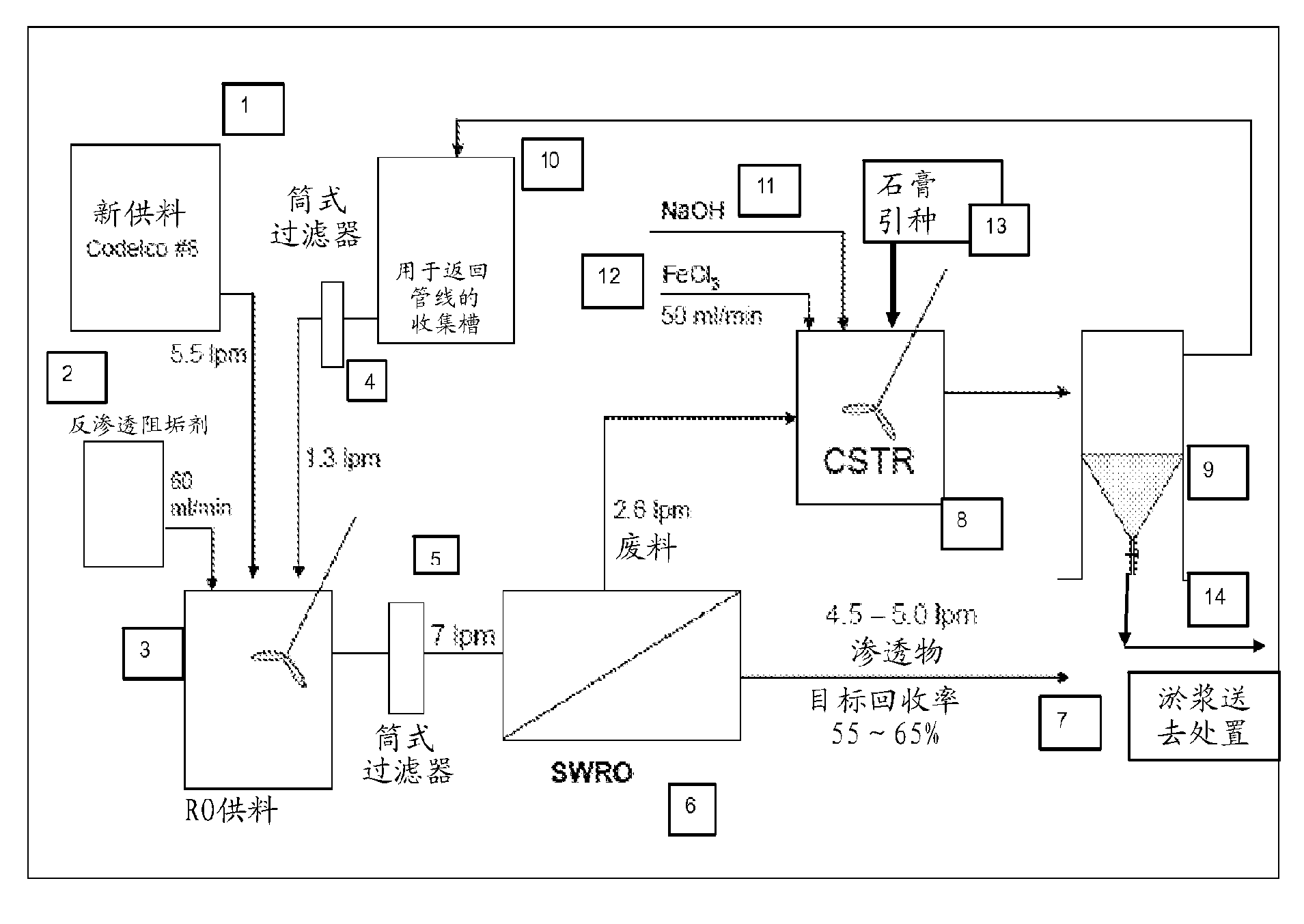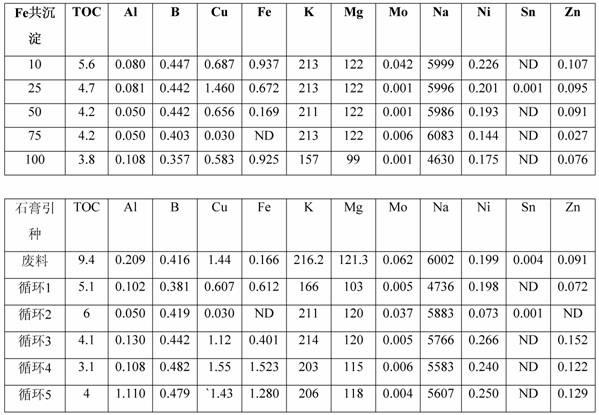High recovery sulfate removal process
A high-recovery, sulfate-based technology, applied in chemical instruments and methods, water treatment parameter control, water/sludge/sewage treatment, etc., can solve problems such as low material supply, high cost, and excessive fouling
- Summary
- Abstract
- Description
- Claims
- Application Information
AI Technical Summary
Problems solved by technology
Method used
Image
Examples
Embodiment Construction
[0018] The high recovery process for sulfate removal involves treating a feed water stream from a source with a reverse osmosis membrane system to produce a purified water permeate stream and a waste stream containing trapped or rejected ions and organic matter. This waste stream is further processed to remove dissolved and suspended species. Water from this waste stream is blended with the feed water stream after treatment. The removed solids are collected as a slurry or slurry and disposed of in a manner consistent with applicable regulations.
[0019] The goal of the method described here is to run with high recovery. Recovery is defined as the ratio of the flow rate of the permeate to the flow rate of the input feed stream.
[0020] figure 1 A simplified diagram of the method is shown. Water from the source enters the feed collection tank (100) at flow F, where it is mixed with reverse osmosis antiscalant (which is of small volume and not considered in the discussion ...
PUM
 Login to View More
Login to View More Abstract
Description
Claims
Application Information
 Login to View More
Login to View More - R&D
- Intellectual Property
- Life Sciences
- Materials
- Tech Scout
- Unparalleled Data Quality
- Higher Quality Content
- 60% Fewer Hallucinations
Browse by: Latest US Patents, China's latest patents, Technical Efficacy Thesaurus, Application Domain, Technology Topic, Popular Technical Reports.
© 2025 PatSnap. All rights reserved.Legal|Privacy policy|Modern Slavery Act Transparency Statement|Sitemap|About US| Contact US: help@patsnap.com



